The artist is best known for her intense, haunting portraits of her close family and herself. She talks about finding her voice
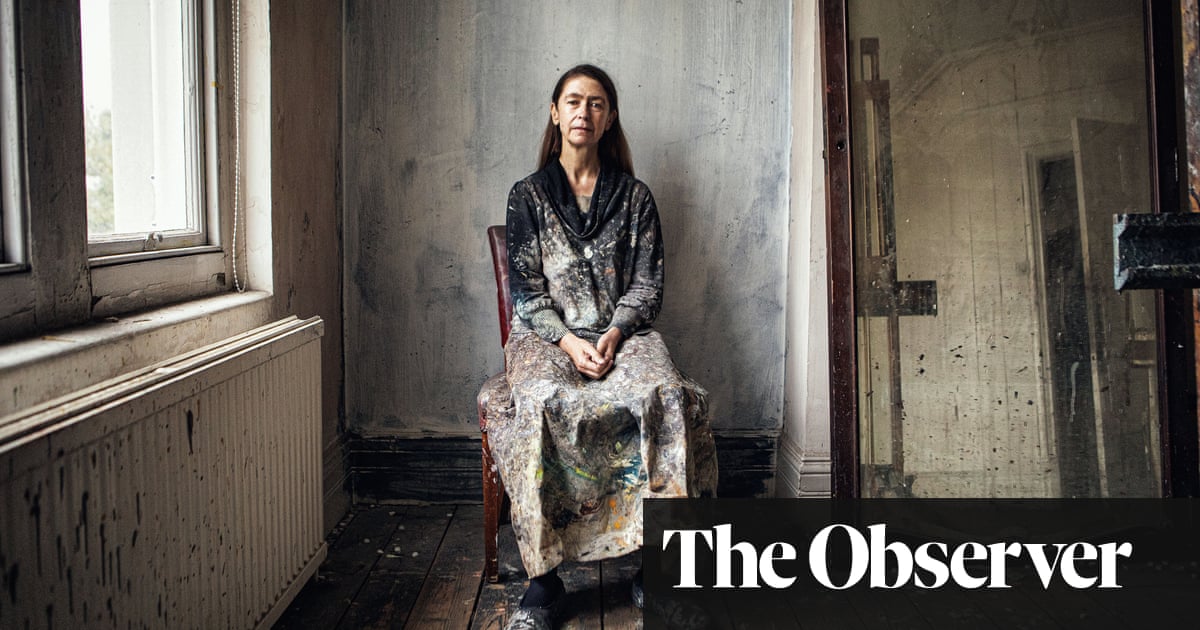
You walk up many flights of stairs to reach Celia Pauls flat, but the climb is worth it. The windows of her studio and bedroom look down on the courtyard and facade of the British Museum. All the world and its history, in every available London light, is just across the street. Paul has lived and painted here the two things are inseparable in her mind since 1982, when she discovered this place with Lucian Freud, her then lover and the father of her only child, Frank, also a painter.
When we first came to look, she recalls, the entrance was at the back and the place seemed a bit dingy. It had been bedsits and there were gas fires where you put coins in the meter, but then we came in here and saw these windows and we were just overwhelmed. Lucian put down the cash deposit immediately.
Paul, now 58, rented the flat for a couple of years before the landlord offered it for sale. Freud bought it for her for 75,000, which seemed such an incredible lot of money at the time. It has not changed much in all the time since. There are bare boards on the floor; she points out an old leak in one corner of the ceiling. The studio is empty except for her easel and piles of discarded paint tubes and rags and a mirror, from which Paul constructs her haunting and soulful self-portraits. The only furniture in the adjoining living room is a battered chaise longue and a chair that is smeared, like much else, with paint. There is a single iron-framed bed in one corner. Paul, whose father was the bishop of Bradford, is married to Steven Kupfer, a teacher of philosophy, but they have always kept separate homes. What faith she has herself, she expresses on canvas.
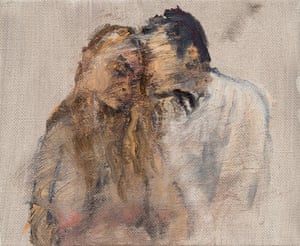
She is not, she admits to me with an apologetic giggle quite early in our conversation, a great lover of conversation. She has struggled her whole life with the terrors of small talk. Her self-containment, her vivid and protected world of interiors, is what gives her painting its enormous affective power. Paul describes herself as an autobiographer rather than a portrait painter by which she means she paints mostly herself and those she loves her four sisters, her late mother, her husband, her son. Each of those singular figures emerge in her work as if from a private netherworld of thoughtful and anxious attention. For a while the family lived near Haworth, and the Bronts have been touchstones for all of the sisters. They have each lost count of the number of times they have read Jane Eyre. Something of the ghost of that association animates a poetic, sometimes painfully honest memoir that Paul has written, which is the occasion for our interview.
Before we sit down to talk she shows me the new paintings that she plans to include in an imminent exhibition of her work at the Victoria Miro gallery in London, which will open at the same time as her book appears. Paul has lately been granted her due as a soft-spoken star of British figurative art, an artist like no other according to the New Yorker. She hoists her new canvases, which have their backs to the room, one by one to her easel, while offering a commentary about how vulnerable it feels to show work in this way.
The paintings each infuse the room with curious light, and put a pin in the map of Pauls life. First up is a meditative seascape that she painted on a recent foray out to Los Angeles for an exhibition of her work. I dreaded going because I never go anywhere she says, but the ocean proved inspiring. The light and the vegetation stirred memories of her very early childhood in India, where her father worked as a missionary. And that made me wonder about my dread of going away
Is the dread about the travel, the flying?
No, she says. I dont mind flying but I suffer from homesickness terribly. I cant stop thinking about getting back to my space here.
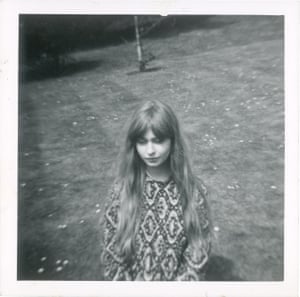
That space is then occupied with an ethereal picture of her younger sister Kate, a writer and former actress, who became her most frequent sitter after their mother, at 80, was unable any longer to negotiate the stairs.
In her book, Kate emerges as Pauls first confidante and soulmate, the sounding board for the fears and excitements of her involvement with Freud, whom she met, aged 18 when she was his student at the Slade School of Fine Art. Freud was then 55. They became lovers almost immediately, maintained a relationship for nearly a decade and a complicated intimacy that lasted until Freuds death in 2011.
The relationship has led to Paul being routinely identified as another entry in Freuds extensive catalogue of lovers and subjects she sat for several portraits rather than as a formidable artist herself. She sees her book, and her self-portraits, as hard-won acts of liberation and defiance at that characterisation.
When Lucian died I was shocked by how I was seen in the world, she says. I was Lucian Freuds muse. I felt I needed to do something about this. I thought the way to do that would be to make this story my own.
She shows me another portrait, this one of her husband, Steven Kupfer, a tender painting that wants to bristle with its subjects quickness of mind.
She pauses before it. Steven is very ill, she says. Though he does not look it. He has had bowel cancer and now he has liver cancer. I painted this in May. He is having chemo still and tests for which we always hold our breath. Psychologically he is very strong, reading madly, thinking about the transcendental ego. His morale is tremendously good. When Paul smiles, she becomes a different person, suddenly girlish. He used to think about philosophy when he sat for me, she says, but he often used to fall asleep. So now he memorises cryptic crossword clues before he comes and solves them in his head.
Kupfer, 78, lives in Kentish Town, a couple of miles north from here. I wonder how their marriage works was it never their plan to live together?
She says that from the beginning they married in 2011 she made it clear that she needed this private space and he was OK with that. He had lived with people before, but he took to the idea. We go out to supper with each other several times a week, she says, and he rings me punctually every day at 3pm and at 9pm. He is clockwork reliable. Compared to Lucian [who would keep her waiting long hours and days and weeks for promised contact], having that support is extraordinarily confidence giving.
Her memoir begins pointedly with the moment she met Freud he in a perfectly tailored grey wool suit, with a white silk scarf, smoking a Gitane on one of her first days at art college, fresh from her girls boarding school in Devon. The first half of what follows mines her old diaries and letters and poems to reconstruct the love and longing and frequent despair that the affair caused her. Some scenes are hard to read Pauls account of Freuds initial forceful physical advances; his insistence that she lie naked for him to paint, imposing an acute vulnerability that made her cry; the one-sided demands and frequent betrayals and the more so because they are rendered in her original youthful voice.
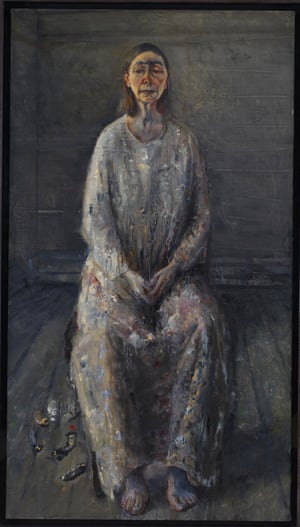
Her story emerges from those beginnings, however, to tell a different tale, one that celebrates family and persistent female power. In Freuds last painting of Paul, she stands fully clothed in this studio, her foot on a tube of paint, with a naked male model, her friend Angus Cook, sprawled on the chaise. Freud seemed to be marking a change in her, a suggestion that she was ready to transition from passive muse to active artist. She is not sure she needed his permission.
Her own work subsequently dwelt on just those tensions. Her best-known self-portrait, Painter and Model (2012), was a large-scale intensely layered depiction of herself sitting in a painting smock; the painting was a scene stealer in the 2016 Tate Britain survey of post-war British painting, All Too Human, alongside the headline acts, Freud and Francis Bacon. The last two new paintings she shows me in her studio, are both new images of herself, now tentatively standing.
When I first started doing self-portraits and I didnt start until I was in my 40s, quite late I did these portraits where my hand was kind of stretched out toward the canvas, as if about to paint, she says. I suppose I was imitating those famous poses of Goya or Rembrandt. But something felt so false about that. Somehow women dont have a secure place in the history of art and to portray myself in this way standing squarely, about to paint, it wasnt right.
The new paintings have been inspired in part by the connection she felt to Paula Regos recent exhibition, Obedience and Defiance. She laughs. I think Im finally ready to stand up from my chair, she says. She stands back from a version of herself on the easel. I called it Self-Portrait Standing. This is a kinder one of me than some, I think.
We both stare at the unforgiving, hollow-eyed portrait and I suggest it could be kinder still.
Do you think? This one started as a very much more cruel image. So what I did, there is this painting by Frans Hals, a beautiful painting of a gorgeous young woman I saw, and I did a sketch of it and put it on the easel so that she would look kindly on me while I was doing it.
If Celia Paul had to escape from domineering male presences in her life, she also had to find a role for herself among her sisters (one of whom, Jane, is married to the former archbishop of Canterbury Rowan Williams).
A portrait she made of the four sisters after her mother died in 2015, My Sisters Mourning seemed to capture something of the form of the famous painting of the Bront sisters, by their brother Branwell. She suggests the reference was conscious.
I also did a portrait of Patrick Bront [the novelists father] and then one of my own father, she says. Who died when I was 23. I had been thinking about absent fathers, which I guess is not far from thinking about God.
Has religion been important to her?
From the earliest memory every day started with prayer and ended with prayer, she says. And it is still in my bloodstream, even though I am not conventionally religious. I am not good at belonging to groups. But doesnt everyone think about God?
That tendency, her memoir suggests, was one reason Lucian Freud was drawn to her, and one of her own means of keeping herself apart.
I think what Lucian was most disturbed by, she says, was my kind of stillness. He had no truck with God. He found that difficult to deal with.
And determined to disrupt?
Yes absolutely. He found it disturbing even if I looked dreamily out of a window. He wanted me firmly in the world.
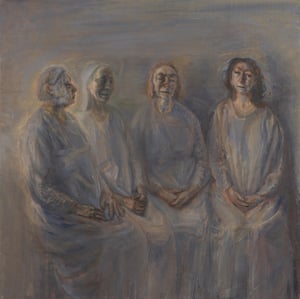
Freud encouraged her to think of their relationship like that between the youthful Gwen John and the ageing Auguste Rodin. John gave up painting for a time, to give herself up to this experience of being in love with the old master. Early in their affair, Freud encouraged Paul to do the same. Could she see the attraction of that?
I think I might have been attracted to it if I hadnt known something of Lucians past history, she says. There was another of his girlfriends, Susie Boyt, who had also been at the Slade 25 years before me and had had five children, four with Lucian. She had stopped painting. Lucian and Susie went on being very close, and Lucian admired her tremendously, but I had the feeling that Lucian might have said something similar to her once in regard to Gwen John and Rodin.
For myself, I think Rodin and Lucian were in quite a profound way very different. Some of the greatest things Rodin did were watercolours of naked women. I felt he had a real empathy with women, as separate to himself, and I feel with Lucian there was always this element of control.
Looking back, now she is at Freuds own age while they were together, does the relationship feel more uncomfortable than it did at the time?
It does, though when I was at the Slade several of the students were having affairs with tutors. The fact that Lucian said to me subsequently that he only came to the Slade to pick up a girl, didnt at the time seem shocking to me, or to anyone there. Whereas now to me it does seem shocking. I had approached him in the life room wanting to show him my drawings, because we both had drawn and painted our mothers. I had felt that affinity. But really that wasnt why he was drawn to me and that felt hurtful at the time.
The relationship with Freud was her first experience with men, she says, which, as her diaries make clear, made it harder to comprehend.
I had been at a girls boarding school, she says. I wasnt interested in boys or men, I was interested in art. I was shocked by Lucian pouncing on me. But part of me thought: Maybe this is what happens. I talked to my mother about it. And my mother said to me: Well, maybe you are in love with him. And I thought to myself: Well, maybe I am. Somehow her saying that seemed almost to give permission for all of it.
Though Freud had numerous children there are 14 acknowledged sons and daughters but maybe 30 others he professed to have no interest in babies. He maintained close relationships with his grown-up offspring including Frank Paul but could never have been confused for a hands-on father.
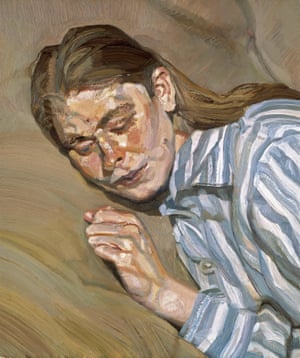
Freud began perhaps his most loving portrait of Paul, Girl in a Striped Nightshirt between 1983 and 1985, during which time she became pregnant and gave birth to Frank. He was very caring while I was pregnant, we were very close during that time, Paul recalls. But after, he was very pleased that I was going to ask my mother to help look after Frank. He expected me to come and be available as I had been, but obviously my life became more complicated. In 1985 when Freud made the portrait of Paul standing, and he bought this flat, they were drifting apart in all sorts of ways, Paul says. When I first met Lucian he wasnt that famous. He was notorious, but he did not have a big international reputation or anything. He was a genuinely Dostoevskian character it seemed to me, living much more on the edge. And then later he became more a national treasure and was quite seduced by that.
When did she last see Freud?
I saw him actually on the day he died, she says. I saw him quite regularly at that time. A few weeks before he died I gave him a bath, and he always used to love having his back washed, and I washed his back with a sponge. He was much more gentle then and, of course, he wanted to regale me with stories about being friends with Princess Margaret and all that.
Though she tried several times, Paul never completed a painting of Freud. I had a mattress on the floor of my studio and he would lie down on that and curl up, she says. I got quite far with one painting and then I just thought this isnt what I want to do and so gradually I stopped. She once made a pencil drawing of Freud asleep that she liked, but painted over it with a sketch of a kneeling penitent.
Later she says, in another context: It is quite telling of portraiture that love shines through. It is one of the reasons I know I cant paint people I dont love. If it works, it is only in a staged way.
While we talk about this past there is the constant, distant noise from the street below from tourists and school parties visiting the museum. Paul seems suitably raised above that cacophony here.
The contrast of stillness is perfect for her, she suggests, though occasionally busking bagpipers below drive her mad. She imagines that in the future she may move away from London in search of greater peace perhaps to the Preseli hills in west Wales where she spends holidays but it is hard to imagine her apart from this studio.
I think Im a braver person, less anxious than I was, she says. My son is completely independent now. So I am freer than Ive ever been before.
I ask about the rhythm of her days. She rises early, at five or six, depending on the light, she says. I have a cup of tea in bed when I look out at the sky. I know a lot of painters boast about working 14 hours a day. But thats not me. My things tend to come in great bursts. So sometimes I work long hours and then sometimes not many hours at all.
You would hesitate to describe Paul as a confident person, but she is possessed of a quietly cheerful certainty in her powers of persistence. She feels finally, she says, that she might be granted her own space apart from the alpha males of British painting. One of the phrases I really dont like is in her own right, she says, as in: Celia Paul is also a painter in her own right. Her voice rises slightly in the stillness of the studio. I want there to be no question that I am a painter in my own right. I feel that my painting belongs to a whole tradition of British art. I can see connections between my work and Stanley Spencer, and Gwen John and Frank Auerbach. And that is the main way I am connected to Lucian, she says, firmly, as part of that spirit of British painting.
Celia Pauls memoir, Self-Portrait, is published by Jonathan Cape (20). To buy it for 17.60 go to guardianbookshop.com or call 020-3176 3837. Free UK p&p over 15, online orders only. Phone orders min p&p of 1.99
The exhibition Celia Paul, opens at the Victoria Miro gallery, London N1, on 13 November

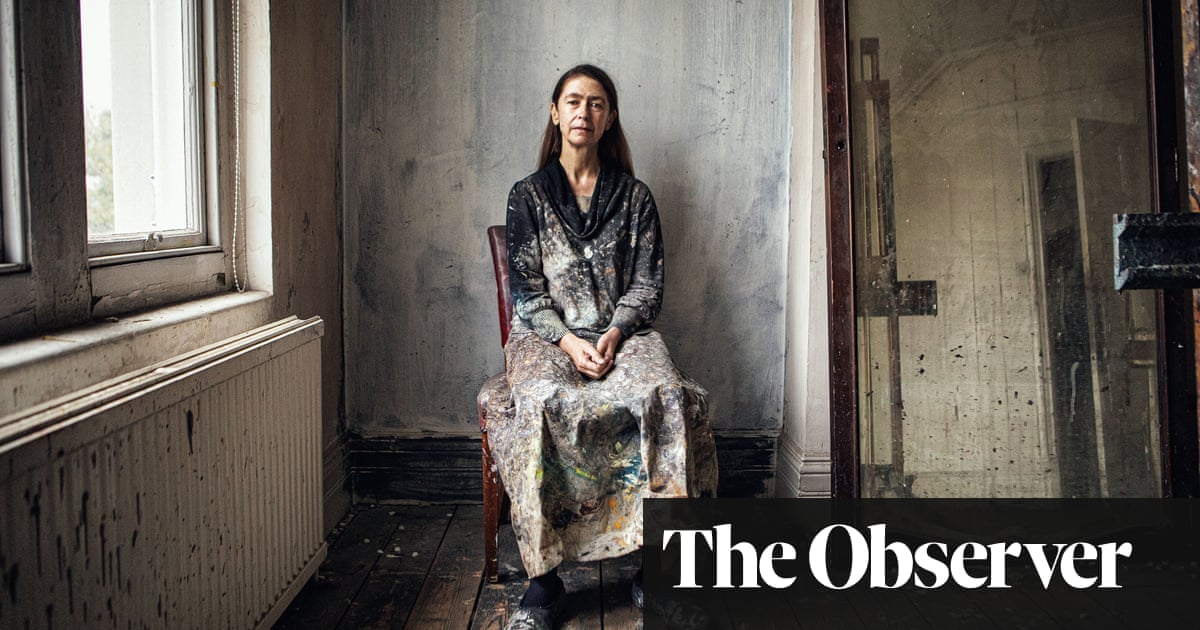
Recent Comments